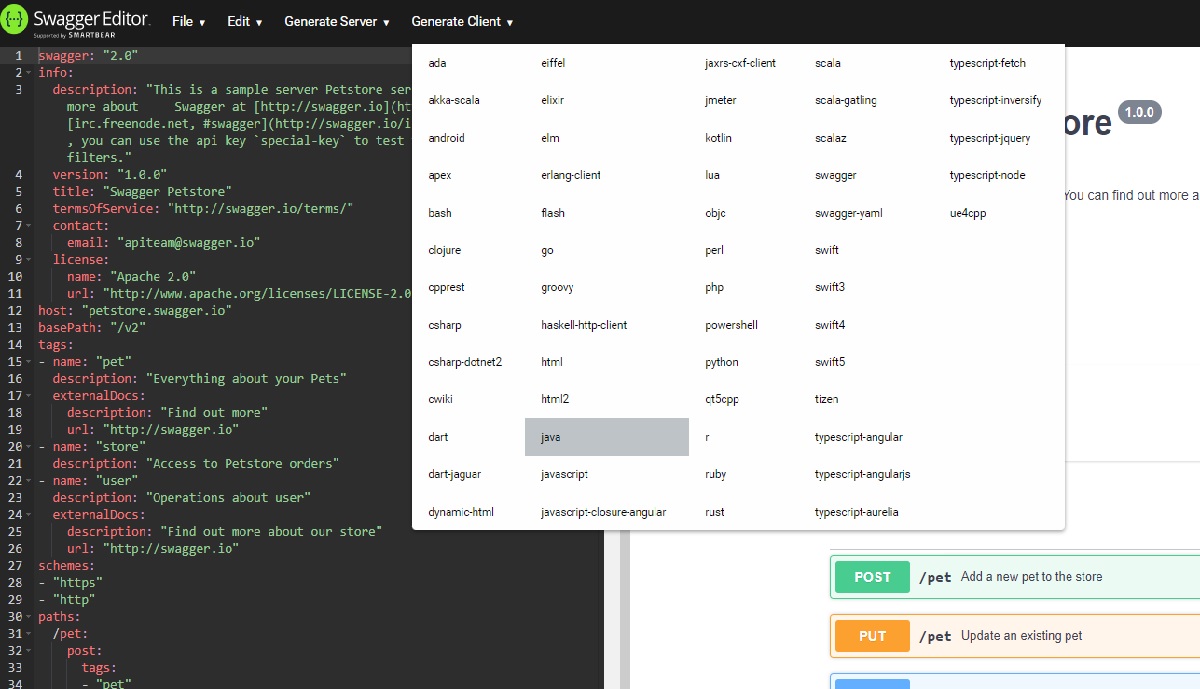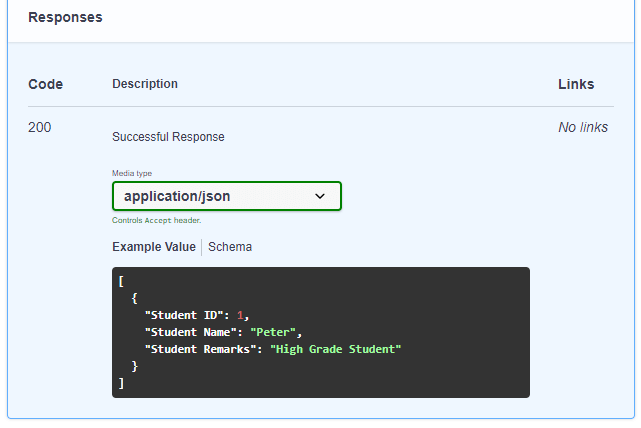
- #SWAGGER EDITOR TUTORIAL FOR FREE#
- #SWAGGER EDITOR TUTORIAL HOW TO#
- #SWAGGER EDITOR TUTORIAL GENERATOR#
- #SWAGGER EDITOR TUTORIAL SOFTWARE#
- #SWAGGER EDITOR TUTORIAL CODE#
#SWAGGER EDITOR TUTORIAL GENERATOR#
The generator has some fallback mechanisms implemented for missing tags and operationId fields.

When inspecting these files you will notice two things:
#SWAGGER EDITOR TUTORIAL CODE#
The API source files are holding the classes and methods your code will directly interface with.
#SWAGGER EDITOR TUTORIAL HOW TO#
We took a close look on the generated code and provide a small example how to integrate with a Qt Quick HMI. As writing boilerplate code can be pretty exhausting when the API has a lot to offer, we came a cross Swagger and OpenAPI Generator that creates code automatically. Qt has a built-in HTTP-client since 4.4 (~2003) which is sufficient to interact with REST/OpenAPI/Swagger APIs, but this means to write quite a bit of boilerplate by hand. When working in an IT context Swagger/OpenAPI is well established, but we also encounter such APIs at the boundary between the OT-world (machines/devices) and the IT-world – often with C++/Qt as an implementation environment. ADLs (API description languages), amongst which OpenAPI/Swagger is the most popular, have been developed to provide a more structured approach to REST, making it easier to develop, test, maintain and document APIs. REST itself is not a tightly defined standard but rather a set of principles and practices (which are, at times, interpreted differently by its users).

SOFTWARE, EVEN IF ADVISED OF THE POSSIBILITY OF SUCH DAMAGE.REST is the de facto standard today when it comes to services and APIs in the IT world. (INCLUDING NEGLIGENCE OR OTHERWISE) ARISING IN ANY WAY OUT OF THE USE OF THIS ON ANY THEORY OF LIABILITY, WHETHER IN CONTRACT, STRICT LIABILITY, OR TORT LOSS OF USE, DATA, OR PROFITS OR BUSINESS INTERRUPTION) HOWEVER CAUSED AND (INCLUDING, BUT NOT LIMITED TO, PROCUREMENT OF SUBSTITUTE GOODS OR SERVICES IN NO EVENT SHALL THE COPYRIGHT OWNER OR CONTRIBUTORS BE LIABLE FORĪNY DIRECT, INDIRECT, INCIDENTAL, SPECIAL, EXEMPLARY, OR CONSEQUENTIAL DAMAGES WARRANTIES OF MERCHANTABILITY AND FITNESS FOR A PARTICULAR PURPOSE AREĭISCLAIMED.
#SWAGGER EDITOR TUTORIAL SOFTWARE#
THIS SOFTWARE IS PROVIDED BY THE COPYRIGHT HOLDERS AND CONTRIBUTORS "AS IS" ANDĪNY EXPRESS OR IMPLIED WARRANTIES, INCLUDING, BUT NOT LIMITED TO, THE IMPLIED This list of conditions and the following disclaimer in the documentationĪnd/or other materials provided with the distribution. Redistributions in binary form must reproduce the above copyright notice, List of conditions and the following disclaimer.Ģ. Redistributions of source code must retain the above copyright notice, this Modification, are permitted provided that the following conditions are met:ġ. Redistribution and use in source and binary forms, with or without License Copyright (c) 2013-2016, Marc Gibbons
#SWAGGER EDITOR TUTORIAL FOR FREE#
It and can be optionally locally using Docker, or deployed for free on heroku. Schema_view = get_swagger_view(title='Pastebin API')Īn example based on the Django REST Tutorial ships with the project. Views.py from import urlįrom rest_framework_swagger.views import get_swagger_view This will produceĪ schema view which uses common settings. To quickly get started, use the get_swagger_view shortcut. Documentation for previous versions is available here.Īdd 'rest_framework_swagger' to INSTALLED_APPS in Django settings.


Note: you are viewing documentation for version 2, using Django REST Framework 3.5+ and CoreAPI. Swagger/OpenAPI Documentation Generator for Django REST Framework


 0 kommentar(er)
0 kommentar(er)
